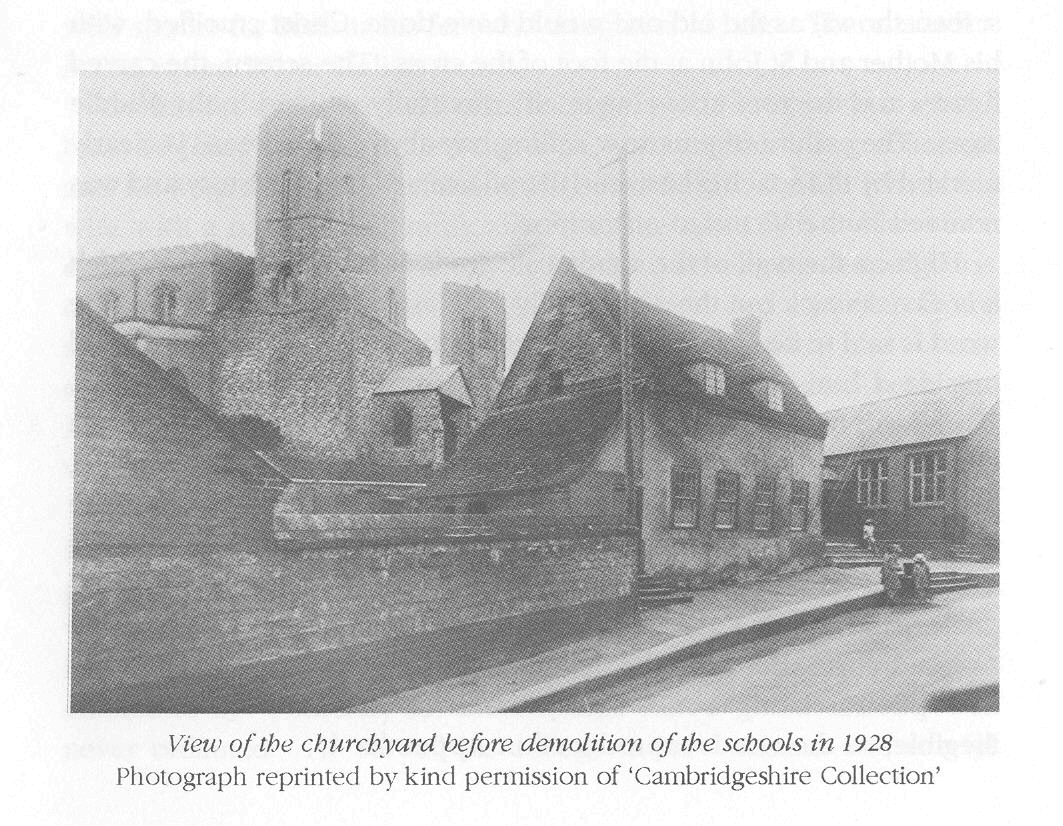"Upon a high hill" - the churchyard

Pause in the churchyard before visiting St Cyriac's. An ordnance survey mark on the base of St Cyriac's tower is 76 feet above the mean sea level. Not only was St Mary's steeple struck by lightning in 1779, but in 1902 St Cyriac's tower was also struck, with less major damage, however. As recently as the 1920s the view from here was very different. Where we now have a steeply sloping sward neatly curbed by iron railings there used to be not one but two village schools. On the right as you look down towards the road "a good house" was built in the 17th century for a master who would teach ten poor children (Lysons). This house survived as an infant school when in 1852 a National School for juniors was built to the left of the churchyard gate. Infants had a safely enclosed playground, juniors took their break in the road. The schools were only demolished in 1928.
The churchyard is no longer used for burials and is in the care of the District Council. The lovely old head stones (so different from today's bright marble) are worth looking at. The one showing Cupid on the wheel of fortune blown by the winds of fate, which is reproduced in the Benedicite window of St Mary's, is immediately outside the south chancel door. Sadly, the verse on the base panel by Francis Quarles, the 17th century poet, is no longer legible. Its existence, though not the words, was recorded by the RCHM in 1972. Outside the north-west transept of St Cyriac's, the headstone of John Blinkinsop (1749) bears a cherub and crossbones - a charming version of the piratical skull and crossbones and a symbol of mortality.
Under the yews close to the east wall is the imposing (by Swaffham Prior standards) neo-Romanesque tomb of the Witt family. They lived in Swaffham Prior Hall in the 19th century and were remembered by Lawrence Fisher as liberal subscribers to the restoration fund. When Ernest Edwin, who called himself de Wilt, died in 1916 Fisher's obituary in the parish magazine recalled that he had been a prominent lawyer, educated at Eton and Peterhouse, whose hobby was to translate English hymns into Latin verse. At the time of his death the family had left the Hall, which was already by then in multiple occupation.
Along the south boundary of the churchyard are two 19th century monuments. The higher one is the grave of squire C P Allix and his wife, the lower marks the place of burial of the human remains excavated from below the chancel during restoration. The path running between the flint boundary wall and the remains of a similar one was created by the squire at the time of the restoration for easier access to the burial ground for the new wheeled bier. The base of St Cyriac's tower served for a time as a funeral chapel. Land for the 'new approach' was hived off the garden of the next door farmhouse which formed part of the Allix estate and was probably the vicarage proudly modernised by Martin Hill in the 1660s.
Before turning to St Cyriac's, look across the High Street at Priory Cottage, briefly the home of the poet and author Edwin Muir and his wife Willa, who lived there in the 1950s. He is buried in the cemetery behind the churchyard (the fifth grave in the 17th row on the left of the path). He wrote of the church towers to a friend: "nobody overlooks us but these two venerable presences ... I have become very fond of them".